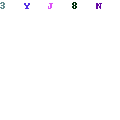Post by account_disabled on Feb 19, 2024 1:01:55 GMT -5
The general method of linking Screaming Frog and Search Console is explained in detail in a previous article , but first, go to "Configuration" > "API Access" > "Google Search Console" and link the property whose data you want to check. Link with the account you have and select the target property. Screaming Frog's Google Search Console API settings screen Checking "Enable URL Inspection" on the "URL Inspection" tab will enable integration with the URL Inspection API, so that data from the URL inspection tool will be displayed in Screaming Frog's Search Console report during crawling. It will be. Enabling the URL Inspection API in the URL Inspection Tab Reports and usage examples of URL inspection related items Once you've integrated Search Console and enabled URL Inspection data capture, and your site is crawled, Search Console data will appear in the Search Console tab of the main report on the left. How to open the Search Console report in Screaming Frog This report allows you to use the following filters related to URL inspection.
URL Inspection filters available in Search Console reports We telephone number list will introduce some examples of how to use data using filters. Check for unindexed URLs “URL is Not on Google” displays URLs that are not indexed due to expected reasons such as redirects, 404 status codes, and noindex tag settings, and “Discovered – currently not indexed” and “Crawled – currently You can see URLs that have not been indexed for some expected reason, such as "not indexed" (crawled - not indexed). How URLs that are not indexed appear You can check to see if any unexpected URLs are included in the excluded URLs, which can help you find indexing problems. Checking for URLs that are indexed but have issues "URLs in on Google But Has Issues" allows you to narrow down your search to URLs that are indexed but may not be displaying optimally due to mobile usability, AMP, or rich results issues.

Additionally, you can use the filters "Page Is Not Mobile Friendly," "AMP URL Is Invalid," and "Rich Result Invalid" to narrow down your search to URLs with each issue. If there are any issues, you can also see the type of issue (e.g. mobile friendly error or rich result warning). How URLs that are indexed and have issues appear Checking URLs where Canonical settings are ignored "User-Declared Canonical Not Selected" allows you to narrow down your search to URLs where the value of the canonical tag actually included in the URL does not match the URL that Google has selected as a canonical URL, which is useful for discovering canonicalization issues. Masu. The default filters are convenient, but you can also export the data to Excel and process the data yourself to create a variety of other ways to use it.
URL Inspection filters available in Search Console reports We telephone number list will introduce some examples of how to use data using filters. Check for unindexed URLs “URL is Not on Google” displays URLs that are not indexed due to expected reasons such as redirects, 404 status codes, and noindex tag settings, and “Discovered – currently not indexed” and “Crawled – currently You can see URLs that have not been indexed for some expected reason, such as "not indexed" (crawled - not indexed). How URLs that are not indexed appear You can check to see if any unexpected URLs are included in the excluded URLs, which can help you find indexing problems. Checking for URLs that are indexed but have issues "URLs in on Google But Has Issues" allows you to narrow down your search to URLs that are indexed but may not be displaying optimally due to mobile usability, AMP, or rich results issues.

Additionally, you can use the filters "Page Is Not Mobile Friendly," "AMP URL Is Invalid," and "Rich Result Invalid" to narrow down your search to URLs with each issue. If there are any issues, you can also see the type of issue (e.g. mobile friendly error or rich result warning). How URLs that are indexed and have issues appear Checking URLs where Canonical settings are ignored "User-Declared Canonical Not Selected" allows you to narrow down your search to URLs where the value of the canonical tag actually included in the URL does not match the URL that Google has selected as a canonical URL, which is useful for discovering canonicalization issues. Masu. The default filters are convenient, but you can also export the data to Excel and process the data yourself to create a variety of other ways to use it.



